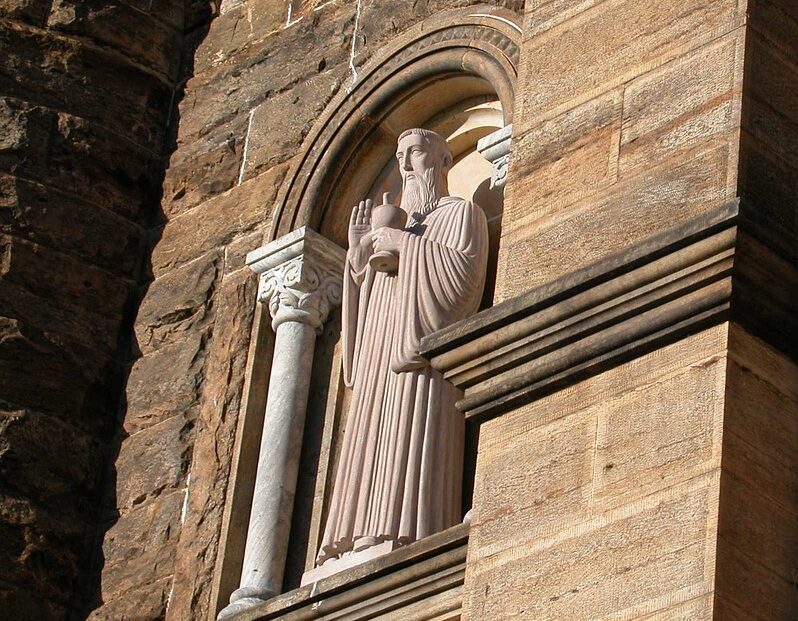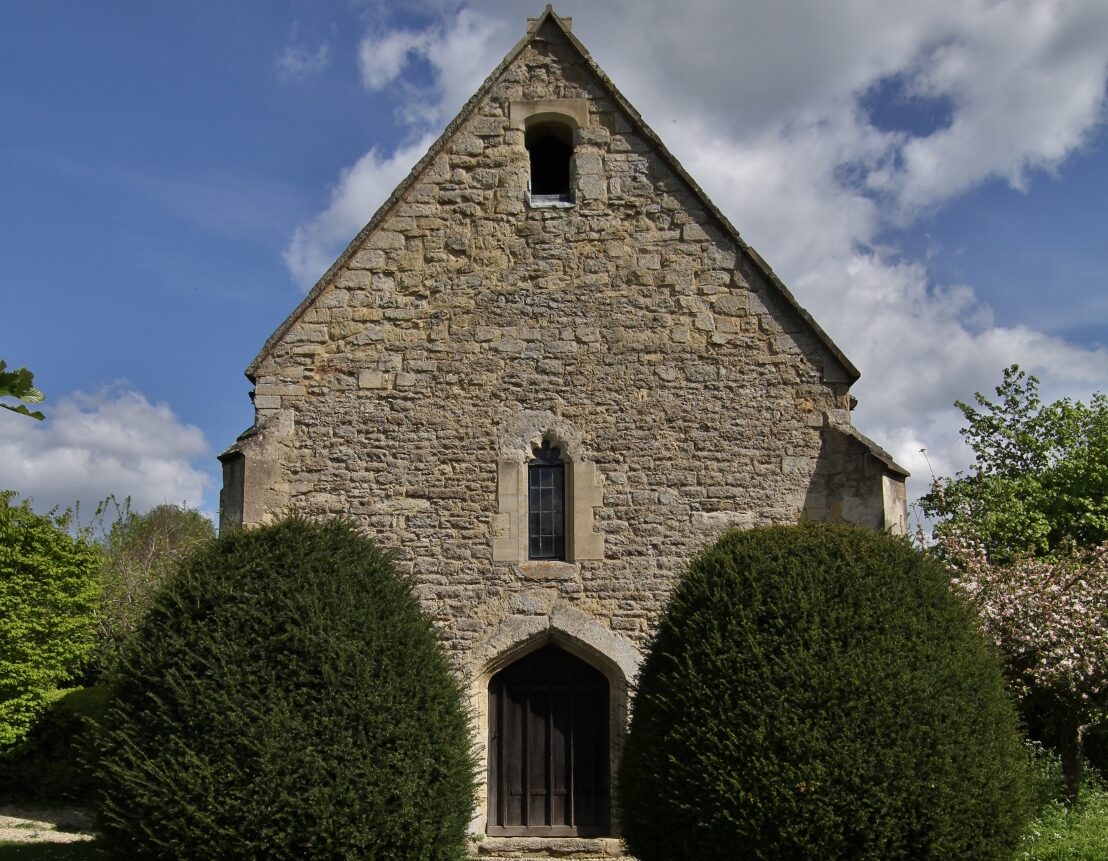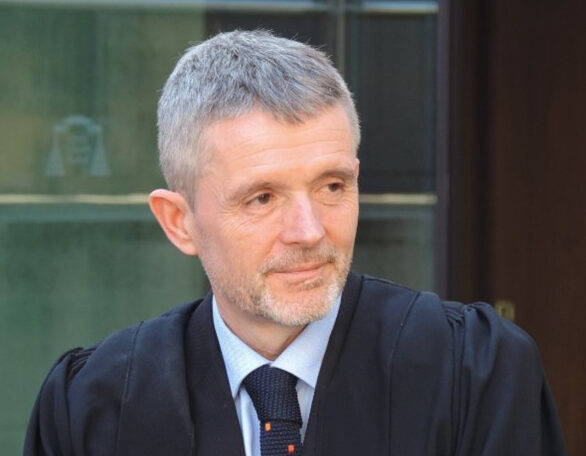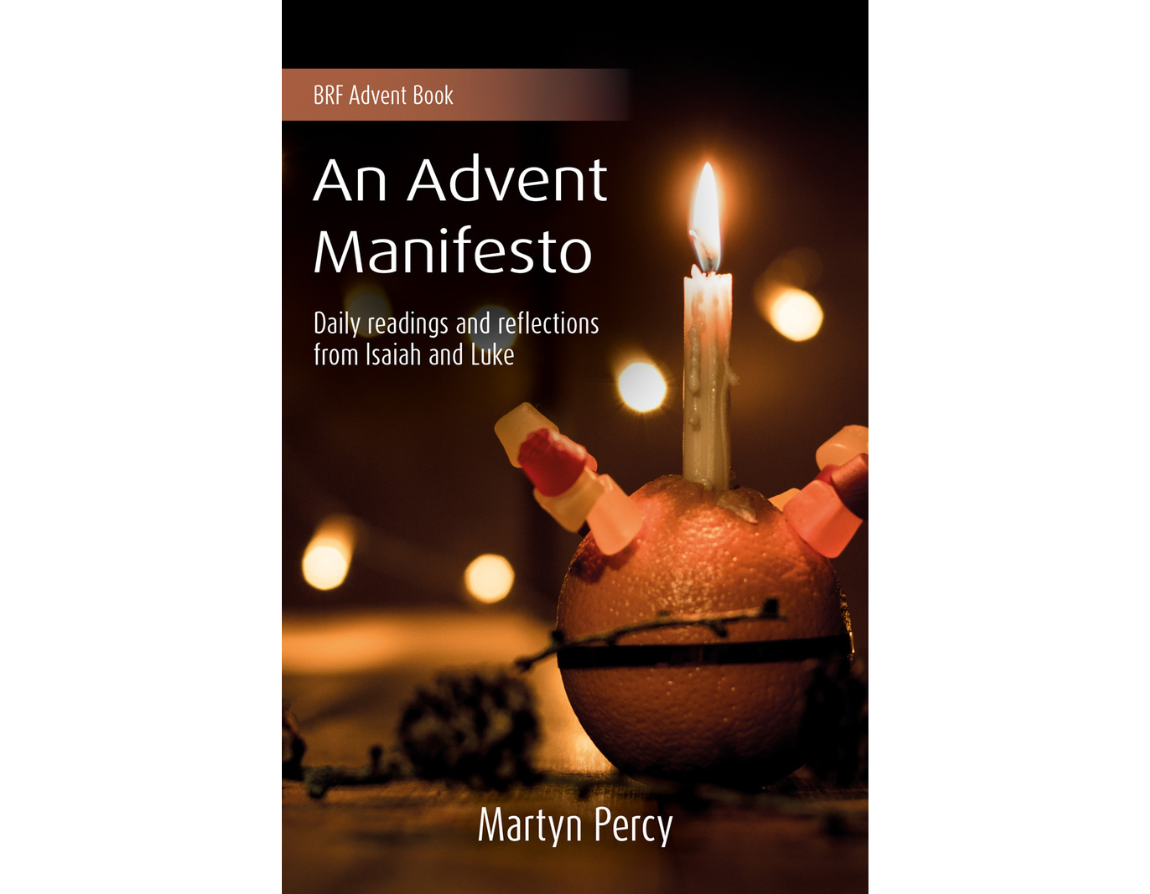The second in a new series of articles by Martyn Percy, linked to themes in his An Advent Manifesto, our 2023 Advent book.
26 November 2023
Kingdom healing in Advent
On a Sabbath Jesus was teaching in one of the synagogues, and a woman was there who had been crippled by a spirit for eighteen years. She was bent over and could not straighten up at all. When Jesus saw her, he called her forward and said to her, ‘Woman, you are set free from your infirmity.’ Then he put his hands on her, and immediately she straightened up and praised God.
Indignant because Jesus had healed on the Sabbath, the synagogue leader said to the people, ‘There are six days for work. So come and be healed on those days, not on the Sabbath.’
The Lord answered him, ‘You hypocrites! Doesn’t each of you on the Sabbath untie your ox or donkey from the stall and lead it out to give it water? Then should not this woman, a daughter of Abraham, whom Satan has kept bound for eighteen long years, be set free on the Sabbath day from what bound her?’
When he said this, all his opponents were humiliated, but the people were delighted with all the wonderful things he was doing.
Luke 13:10-17 (NIV)
One of the more famous of St Benedict’s quotes (from The Rule) is: ‘Before all things and above all things, care must be taken of the sick; so that the brethren shall minister to them as they would to Christ himself, for he said: “I was sick and ye visited me.”’ Benedict had read his gospel: ‘Jesus went forth, and saw a great multitude, and was moved with compassion towards them, and he healed their sick’ (Matthew 14:14, KJV).
The healing miracles
Almost 30 years ago, in 1996, I published an article on the healing miracles of Jesus which pressed the question not about whether or not these miracles ever happened, but what they meant to their audiences, either as events or as written narratives. It caused a bit of a storm – at least for theology.
The paper argued that the healing miracles of Jesus were not in themselves particularly important, either as historical events or as plain narratives. What was more significant about the miracles were the political implications that flowed from them. I drew attention to the fact that in the 40 or so healing miracles recorded, we hardly ever learn the name of the person who is healed. This seemed to me to be quite significant, pointing to the insignificance of the beneficiaries.
But what is arguably more revealing about the nature of these miracles is the gospel writers’ willingness to tease the reader by naming the category of affliction: leprosy, mental illness, single mothers with dead children, orphans, people of other faiths, the elderly, and the severely crippled and handicapped. I could go on. Jesus hardly ever heals his friends, and rarely ever heals anybody with any significant social, moral or political status. In nearly every case, the healings of Jesus are directed towards those who are self-evidently on the margins of society, or who have been excluded from the centres of social, political, moral or religious life. Not only that, the friendships that Jesus made also suggest that he was more than willing to share his time and abundance with this same group of nameless outcasts.

Benedict had read his gospel: ‘Jesus went forth, and saw a great multitude, and was moved with compassion towards them, and he healed their sick.’
A subversive activity
This observation is not particularly interesting in itself, but it does start to raise a question about what the healing miracles were for, if they are in effect ‘wasted’ on groups of people who appear to be unable to make a significant response? Yet when one turns to the sorts of encounters that Jesus has with religious and political authorities, particularly when they are accusing him of betrayal, we begin to see that Jesus’ healing activity was, for the authorities, a dangerous, even subversive, activity.
Jesus consorts with the wrong sorts of people in the eyes of the righteous; he’s not in church, but ‘down the pub’. Moreover, Jesus gets no return for his investment in ‘the lost’ or ‘the unclean’; he wilfully loves the loveless, and he seeks out those who everyone else has given up on. In all of these healing encounters, the remarkable thing about Jesus’ ministry is that it discriminates – for the unknown, the lost, the marginalised and the victimised. And almost nobody else. Jesus is the body-language of God: his incarnation expresses God’s bodily feeling for the unseen, unheard and untouched.
So, Jesus heals the crippled, the lame, the mute and the blind; the widow of Nain’s son – a boy in an Arab part of Palestine, so almost certainly non-Jewish. Jesus heals Samaritans, slaves of Roman centurions, people of other faiths – and many of no faith. The healings of Jesus are just an extension of God’s compassion for all of humanity – but especially for the alien and stranger.

Jesus is the body-language of God: his incarnation expresses God’s bodily feeling for the unseen, unheard and untouched.
A chilling liturgy
Near where I used to live, and tucked away in a hidden corner of East Oxford, behind the Cowley Road in the direction of what was once ancient marshland, is a house and chapel built for the seclusion of lepers. The (St Bartholomew’s) Bartlemas chapel and the adjacent Bartlemas hospital was endowed by King Henry I back in 1126 so that the terrible threat of leprosy could be safely excluded from the city of Oxford.
The official response was a mixture of pity and horror. For all that some wealthy and influential patrons tried to ensure a minimum of decent care for the sick, there were many others who went along with those primitive feelings of disgust and revulsion that led to a systematic rejection of the most vulnerable members of the community – ostracised to beyond our margins.
You can find in the archives the details of a special ritual which accompanied the process of social banishment. It was presided over by the church in a chilling liturgy called ‘The Mass of Separation’. The unclean person is led out to the leprosarium after the fashion of a funeral procession. Typically the victim is then formally clothed with a simple set of leper’s garments, basic everyday utensils and a begging bowl. Sometimes they are actually forced to stand in a coffin for the duration of the rite. The priest then reads out the binding admonition that will finally sever all links with the wider community:
I forbid you ever to enter a church, a monastery, a fair, a mill, a market or an assembly of people. I forbid you to leave your house unless dressed in your recognisable garb and also shod. I forbid you to wash your hands or to launder anything or to drink at any stream or fountain, unless using your own barrel or dipper…

The official response was a mixture of pity and horror that led to a systematic rejection of the most vulnerable members of the community.
Left: Bartlemas chapel, Oxford, seen from the west (photo by Motacilla – Own work, CC BY-SA 4.0; cropped)
An Advent of prayerful change
The demographics – and geography – of sickness and poverty have always been inextricably linked. In the UK, obesity is now one of our biggest threats to health and one of our biggest killers. Yet it is not a disease of the rich but of the poor. Maps of the UK spell out the demographics of obesity plainly. The concentrations of obesity lie in our poorest and most disadvantaged communities and correlate almost precisely with concentrations of unemployment, underlying social concerns connected to indices of poverty and health-related consequences such as cancers, heart conditions and diabetes.
It is to such places that Jesus went and healed. Not to the wealthy and healthy, but to the unknown, unnamed and undervalued. Half the task of healing – and of medicine – is wrapped up in politics and pastoral care. One half is clinical expertise. The other half is nourishing and getting alongside people with their illnesses and their problems, and treating them with kindness, empathy and compassion. The politics is about getting tough not just on disease and illness, but getting tough on the causes of disease and illness.
May our Advent be one of prayerful change – not just for our benefit, but rather for people, politics and society. The kingdom is coming to those whom we have neglected, and our leaders left behind. God will lift them up. Help God in this work, and venture to where Jesus searches and saves.


